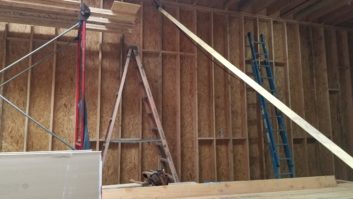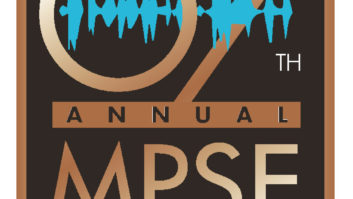

Surround sound. If you’re into next-gen audio, then you need to get hip to multichannel audio. Forty percent of game consoles are hooked to surround systems, the decade-long trend in home theater. It’s here, it’s now, and a couple of academics are looking to change the way we work with it.
Peter Otto, director of music technology at the University of California, San Diego, and Terry Maedche, formerly of the aerospace industry and a man with a passion for sound, are working on a surround sound system that operates independently of the number of channels you have. Maedche is taking his business acumen (he’s the CEO) and combining it with Otto’s hands-on tech savvy, and the result is Immersive Media Research, a company devoted to the “art” of surround. With IMR’s first suite of tools, surround instructions can be applied to any set of speakers and the system figures out the proper panning and attenuation for you. It is delivery platform-agnostic, so to speak, and it’s being developed at UCSD. It’s called Vortex.
How does Vortex Surround differ from other surround applications, such as using a Dolby Digital or DTS encoder within Pro Tools or Nuendo?
The Vortex system allows sound designers to create in a multichannel environment, then pass the audio along in an improved surround workflow.
Otto: Vortex differs significantly from Dolby Digital and DTS workstation-based software tools. These great products are oriented around the final stages of converting finished surround content to deliverable formats — including cinema and new HD formats for DVD/Blu-ray release. The DTS and Dolby tools you would use in final mastering of content — automated down-mixing tools; confidence monitoring; and compression choices, including bit rate, dialog normalizing, final channel ordering and some import/export choices — this is indispensable functionality, to be sure. We don’t attempt to support all of the dozens of compression varieties and do not offer sophisticated mastering tools. Vortex Surround is a content-creation tool used prior to the mastering phase. We are interested in the delivery end, but in real-time spatial audio rendering in game engines rather than mastering and compression decoding.
Vortex Surround is all about improving surround mix workflow. The original concept was mostly concerned with creating better spatial imaging and simulations, but once the DSP work was done and composers and sound designers started using the DSP, we realized how many steps are involved in the surround production chain: file management, layering surround files, session configuration, channel ordering, test routines, bass management, ease of playback and monitoring, etc. These are all issues that were barriers to creativity and productivity for surround or 3-D audio.
Can Vortex operate as a plug-in to standard DAW apps?
Otto: Yes! We are in beta now with a powerful VST plug-in that combines many features of our Mixer and Designer products. The first version integrates seamlessly with Ableton Live and other workstations. Other surround-processing variants, plug-in formats and some crazy plug-in controls like flocking, physics, gestural controls, etc., will be forthcoming this year, as well.
Vortex Encoder appears to bypass Dolby Digital but supports DTS export. Will AC-3, Dolby Digital Plus and Dolby TrueHD be supported in the future as an export format?
Otto: We embraced DTS in the pre-HD days because we preferred the fidelity and scalability, and we were very hopeful for the DVD-A format and wanted to support it. But in the future, we will not focus on compression encoding, which is done very well with other products. We will concentrate on our strong suits: content creation, imaging, control, DAW and authoring host integration [plug-ins], and spatial audio rendering, which is different from encoding/decoding of the various compression flavors.
How would one go about supporting a field higher than 7.1 in a game that is, say, PC only? One would use a multichannel Ogg or WAV file, but what would the game’s playback system require?
Otto: The file format is not such a problem — you could use mono AIFF or WAV files as long as you keep them sample-synchronous, just as a DAW does. You could also use multiple compressed streams. So you would need a playback engine that could deal with lots of channels. We’ve done 10.2, 16.8.2 and above.
And then you need a multichannel interface that gives you as many channels of output as you need. If you wanted to use multiple compressed streams, you’d have to mount more than one soundcard or interface to pass encoded streams to A/V receivers for decoding and conversion. On a Mac, you can mount multiple “aggregate” interfaces; I’ve seen something similar on PCs.
When will the Designer and Mixer be available for Windows XP/Vista?
Otto: We are moving everything to Universal Binary now so we should have XP/Vista by the end of summer. The surround mixer plug-in will be released for both platforms from the get-go, so that’s exciting.
How much will the tools cost and when will they be available for purchase?
Maedche: The three-product suite — Vortex Designer, Mixer and Encoder — have been on the market since 2005, and have been adopted by a number of educational programs, sound designers and avant-garde composers. The pricing of the suite for the education market is $599, and we’ve just introduced individual student licenses for $149 when their respective institution buys a license. The introductory price of the Vortex Surround VST is $99.
What reaction have you had thus far from game developers and film studios?
Otto: Superpositive reaction from the Sony PlayStation 3 [PS3] guys we’ve shown to. Very much encouragement from everyone we’ve demo’ed for in the game community. Incidentally, my Project Bar-B-Q work group [the game audio think tank] is very much onboard with this idea of tightly integrating audio authoring with run-time rendering for consistency on the game platforms.
What I think the game folks like is that our goal is to provide a scalable, superior-sounding spatial DSP and easy-to-use interface, so that an IMR audio engine that runs as a plug-in on audio content-creation workstations will run exactly the same on our or someone else’s real-time game authoring tools and, in turn, will run the same on a cell-processor game engine. So when you design a sound to move in a particular path at a particular speed — or following a particular set of rules — from 80 meters to 20 meters, left-front to right-rear, it will sound exactly the same in the sound designer’s Pro Tools rig, in our Designer application, in a middleware authoring plug-in and in the PS3 at home.
Beyond Vortex, do you see any radical design changes to the way surround sound is produced?
Otto: Consumers have not yet heard what is possible in the best labs and studios, but the cell processor, though now completely underutilized, will likely turn out to be the best audio engine. The kind of processing that is needed to do really great immersive, 3-D audio is now becoming available, and given great tools we’ll have the potential to make audio a pure virtual-reality experience.
I look forward to being able to convolve the acoustics of a concert space into a superhigh-definition, surround sound cinema theater using high-speed networking, acoustical capturing and enhancement systems. Audience-based gaming in digital cinemas with elaborate real-time spatial audio interactivity is fun to imagine, and probably not as far away as you might think.
Alexander Brandon is the audio director at Obsidian Entertainment (Santa Ana, Calif.).

WATCH:
Photo Gallery of Vortex Surround

The suite

Vortex Surround Encoder is a surround sound utility application that allows you to combine and encode several individual sound files into a single multichannel master file.

Terry Maedche (left) and Peter Otto

The Vortex Surround Designer functionality is now available in a VST plug-in.







